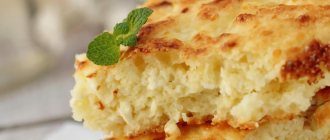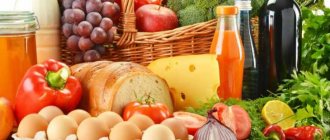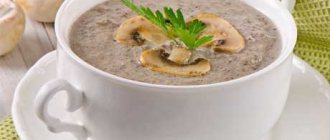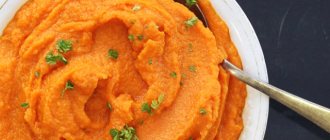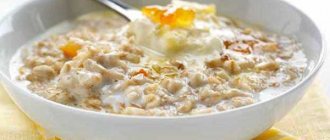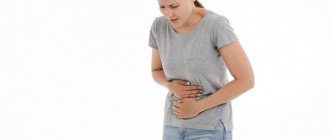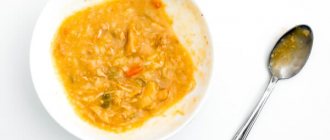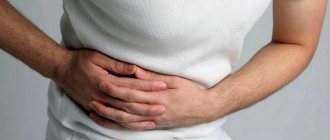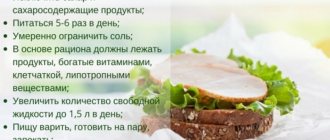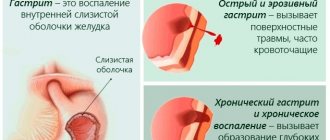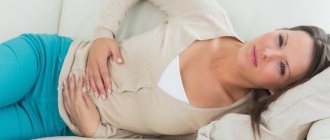A diet for cholecystitis involves excluding exposure to mechanical irritants. As a result, it is recommended to fry, puree or finely chop food. Fatty, spicy foods are excluded from the diet. If there are stones due to cholecystitis, limit the use of vegetable oils that have choleretic properties. Otherwise, the risk of hepatic colic increases.
Features of the disease
If a patient has cholecystitis, an inflammatory process of an infectious nature is observed in the area of the gallbladder. One of the main causes of the disease is considered to be stagnation of bile.
Cholecystitis happens:
- calculous;
- stoneless.
The disease is accompanied by the following symptoms:
- the occurrence of pain. They are usually localized in the hypochondrium area. Discomfort often increases after consuming fried and smoked foods and alcoholic beverages. Painful sensations can be caused by nervous tension. At the stage of remission, unpleasant sensations of aching nature are observed. During the period of exacerbation of the disease, the pain becomes severe and unbearable. They often radiate to the area of the shoulders and neck;
- a feeling of bitterness in the mouth. The patient often experiences such unfavorable manifestations as nausea, vomiting;
- bloating;
- regular constipation.
Diet for cholecystitis during an exacerbation is one of the integral components of complex therapy. Therapeutic nutrition also improves well-being with dyskinesia in the biliary tract area.
A diet for the gallbladder (exacerbation of the disease) involves a mild effect on the digestive tract. In the first two days, therapeutic fasting is indicated. At the same time, a variety of drinks are recommended: weak tea, juice diluted with water, rosehip infusion. On the third day, you need to start following diet No. 5B, which has an anti-inflammatory effect. This method of losing weight is indicated for a short period of time (approximately 4–6 days). It must be adhered to while on bed rest.
For cholecystitis, the diet involves reducing the proportion of carbohydrates to 0.2 kg. The share of protein in the menu also decreases (up to 70 grams).
It is recommended to cook food without adding salt. The food should be pureed (in puree form, with the consistency of a delicate soufflé). The patient needs to adhere to the principles of fractional meals (at least five times a day). The portion size remains small. The average calorie content of the menu is 1600 kcal. A diet for cholecystitis of the gallbladder also includes consuming a sufficient amount of fluid (about 2 liters).
Diet for cholecystitis: what can you eat, what can’t you eat?
In case of exacerbation of the disease, inclusion in the diet menu is allowed:
- light mashed porridges cooked in water;
- soups, the main ingredients of which are rice or oatmeal;
- mashed compotes;
- juices made from vegetables;
- fruit jellies;
- thoroughly pureed meat;
- low fat cottage cheese;
- fish cooked in a steamer;
- wheat bread.
Such therapeutic nutrition is recommended in the presence of non-calculous cholecystitis. The diet for calculous cholecystitis is compiled taking into account the same principles. Patients with any form of the disease are transferred to the 5A diet on days 7–10. This therapeutic diet must be followed for at least one week.
When following a diet for acute cholecystitis, the following are excluded from the daily menu:
- products that can enhance the fermentation process. Such foods include: millet, legumes, white cabbage;
- products that activate bile secretion. Such foods include: mushrooms, spices, salted tomatoes, mustard;
- broths made from legumes, mushrooms and fatty fish;
- fruits with a sour taste;
- foods that contain a lot of fiber;
- cream;
- high fat cottage cheese;
- strong brewed coffee;
- drinks containing various preservatives and dyes.
Diet for cholecystitis of the gallbladder during an exacerbation: menu for the week
The diet can be formulated in a variety of ways. Several daily menu options can be seen below:
- option one. For breakfast, it is recommended to prepare oatmeal and pear compote. You are allowed to eat 1 pear at this meal. The best option for a second breakfast is a puree made from banana and cottage cheese. For lunch, a diet for inflammation of the gallbladder during an exacerbation involves preparing vegetable broth, dietary rabbit meat, and berry jelly. The afternoon snack menu consists of carrot and apple salad with the addition of flower honey and herbal tea. The main course of dinner is macaroni and cheese, 200 ml of tea with biscuits;
- option two. For breakfast, it is recommended to eat potato dumplings and 200 ml of rosehip infusion. The second breakfast can be called quite light (a portion of beet salad). Lunch consists of milk soup, stuffed peppers, a portion of buckwheat porridge, 200 ml of apple juice. Vinaigrette is ideal as an afternoon snack. A light dinner consists of 0.2 kg of omelet and a glass of kefir.
Basic principles of diet during an exacerbation period
With calculous cholecystitis, severe acute pain in the bile duct occurs unexpectedly.
A person feels heaviness, the temperature rises, nausea, vomiting, and intestinal upset may appear. At night, hepatic colic is felt, urine becomes dark and feces light, the skin becomes jaundiced. The role of diet in the treatment of calculous cholecystitis is very important. The basic principle is to limit the intake of fats and carbohydrates. More protein foods are added to the menu. The diet allows you to:
- quickly relieve the load on the liver;
- relieve chronic pain;
- restores the functioning of the gallbladder;
- helps remove stones from the body.
Dietary products are easily and quickly digested by the body and do not cause stress on the liver.
Important! The main rule of the diet is to eat frequently. It is necessary to eat 4-5 times a day at equal intervals.
Eating at the same time every day helps train the body to secrete gastric juice at a certain hour. If you do not follow this recommendation, the bile will precipitate, and new stones will form from it.
Calculous cholecystitis is an age-related disease. The daily calorie intake should be limited to 2000 Kcal, due to the sedentary lifestyle of older people. At the same time, the balance of all nutrients should not be disturbed.
Diet for chronic cholecystitis complicated by other ailments
When cholecystitis is combined with pancreatitis, table No. 5P is indicated. At the same time, the daily proportion of proteins in the daily menu is limited to 120 grams. The consumption of carbohydrates, which stimulate the pancreas, should also be monitored.
In the presence of pancreatitis, extractive substances are also limited. These include:
- rich meat broths;
- dishes with cabbage;
- fatty fish broths.
Patients suffering from pancreatitis should refrain from eating vegetables that contain rough fiber. It is recommended to boil food or cook it in a double boiler. The duration of the diet is at least two months. After the specified time has passed, the list of products on the daily menu can be expanded.
If inflammatory changes in the gallbladder are accompanied by gastroduodenitis, it is recommended to adhere to Table No. 1. Both very cold and scalding hot foods are excluded from the daily menu. Dishes with a mushy or semi-liquid consistency are recommended.
The following foods rich in fiber should be excluded from your diet:
- turnip;
- asparagus;
- peas;
- beans;
- radish;
- dates;
- currants
For gastroduodenitis, fruits with rough skin, streaky meat, and whole grain bread are also contraindicated.
Symptoms
In the initial stage of calculous cholecystitis, symptoms often do not manifest themselves by external signs. This significantly complicates differential diagnosis and subsequent therapy.
With the development of an acute inflammatory process, typical signs of the disease appear:
- sharp pains that are localized under the ribs on the right and radiate to the scapula;
- nausea and vomiting of bile;
- increased body temperature (up to 38 degrees);
- a sharp decrease in blood pressure;
- general weakness, cold sweat;
- feeling of dry mouth;
- heartburn, belching;
- dark urine;
- light stool;
- signs of obstructive jaundice.
Making zucchini soup
When following a diet for chronic cholecystitis, you need to cook squash soup. The step-by-step sequence of its preparation is as follows:
- Finely chopped vegetables (fresh onions, carrots) are stewed in 150–200 ml of water mixed with butter.
- After this, small slices of potatoes are placed in the broth.
- After 20 minutes, add stewed roots, 1 tomato, and small slices of zucchini to the dish.
- Add enough salt to the soup.
Before eating, the dish should be sprinkled with finely chopped dill. If desired, add sour cream to the soup.
Development of calculous cholecystitis and possible complications
Cholecystitis is an inflammation of the gallbladder. It can develop for various reasons and be of infectious or non-infectious origin. All types of cholecystitis are conventionally divided into two categories:
- non-calculous - not associated with the formation of stones, often develops when an infection occurs from the liver or intestines;
- calculous - develops when stones irritate the walls of the gallbladder and cause inflammation.
Gallstones can be of different etiologies and chemical structures. They consist of cholesterol or pigments, and can also be mixed. The process of stone formation occurs in several stages. First, the ratio in the amount of cholesterol and its solvents—essential phospholipids and fatty acids—changes. Then the bile becomes thicker and accumulates in the bladder, without free outflow. Cholesterol crystallizes to form stones of various sizes and shapes. Stones from bile pigments (bilirubin) are formed in a similar way, but instead of cholesterol, unbound bilirubin is the main one for their structure.
Acute cholecystitis, which develops in combination with cholelithiasis (GSD), poses a danger to the life and health of the patient. Stones can injure the walls of the gallbladder, causing its contents to spill into the abdominal cavity. Bile is a very toxic concentrate and can irritate the mucous membranes of internal organs. Perforation of the gallbladder wall by a stone can cause the development of peritonitis. In addition, large stones can clog the lumen of the bile ducts and injure their walls.
Calculous cholecystitis is an inflammation of the gallbladder caused by the formation of stones in its cavity.
Recipe for creamy soup with croutons
The diet for uncomplicated cholecystitis also includes preparing cauliflower soup. It needs to be prepared according to this recipe:
- You need to boil cabbage and 2 potatoes.
- After this, the vegetables are rubbed through a sieve. In this case, several cauliflower inflorescences are left whole.
- Rice needs to be boiled for 60 minutes. Then it is added to the soup.
- A small amount of salt is added to the dish.
- After this, the soup is seasoned with milk and a few slices of butter are added.
- It is recommended to add the finished dish with croutons.
Diagnostics
If a patient has clinical, anamnestic and physical signs that indicate acute calculous cholecystitis, it is necessary to determine an accurate diagnosis, possible complications and indications (also contraindications) for surgery as quickly as possible. The following studies are prescribed:
- Ultrasound of the hepatobiliary region. For best results, do it on an empty stomach. The study reveals gallstones and signs of inflammation in 90% of cases (in 80% of cases). A typical sign of the disease is a thickened bladder wall (more than 4 mm).
- Radiography. X-ray of the biliary tract detects stones in one out of ten patients. In 1% of patients, the presence of intramural or intraluminal emphysema of the gallbladder is determined.
- MRI and CT. Studies help to make a correct diagnosis and promptly identify complications and concomitant diseases. Thickening and emphysema of the bladder wall, effusion in the paravesical space, as well as subserous edema and rejection of the mucous layer of the gallbladder are determined.
- Hepatocholecystoscintigraphy. It is considered an accurate research method when a radioisotope monitors a violation of the outflow of bile.
- ERCP. Prescribed for diagnostic and therapeutic purposes to patients with suspected stones obstructing the common bile duct (common bile duct).
Zucchini casserole
Boiled chicken meat is ground using a meat grinder. After this you need to add a little milk sauce and beaten egg white.
Then you need to combine the minced meat with chopped zucchini, add salt. The resulting mass is transferred to a separate form. You need to pour the rest of the sauce on top. The dish must be cooked in the oven for thirty minutes.
General principles
Nutrition for chronic cholecystitis should be chemically, thermally and mechanically gentle.
Basic diet without exacerbation - table No. 5
Boiled, baked and steamed foods are recommended. Meals are frequent - up to six times. Salt in limited quantities.
What can you eat during remission:
Diet for cholecystitis of the gallbladder + menu
- Stale bread made from not the highest grade wheat flour, crackers.
- Lean types of meat (veal, turkey, chicken, rabbit) steamed, boiled or baked.
- Low-fat fish, boiled or steamed.
- Milk, kefir, low-fat cottage cheese.
- Eggs without yolks in the form of omelettes.
- Vegetarian soups with vegetables and cereals (rice, pearl barley, buckwheat).
- Porridges cooked in water alone or in milk diluted with water (rice, semolina, oatmeal, buckwheat).
- Boiled thin vermicelli.
- Boiled or baked vegetables.
- Sweet ripe fruits, baked and fresh, dried fruits.
- Marmalade, marshmallows, marshmallows, fruit and berry jelly, jam.
- Butter – no more than 30 grams per day.
- Sweet juices, rosehip decoction, weakly brewed tea and coffee.
The following products are prohibited:
- Foods that lead to rotting and fermentation processes in the gastrointestinal tract: millet, white cabbage, legumes.
- Fatty meat, kidneys, brains, liver, lard, any sausages, cooking fat.
- Smoked, pickled, salted, spicy, pickled, fried, spicy, canned food.
- Mushrooms.
- Rich broths made from mushrooms, fish and meat.
- Radishes, garlic, turnips, radishes, green onions.
- Cranberries, citrus fruits, sour plums, etc.
- Fatty dairy products: cream, sour cream, cottage cheese.
- Carbonated drinks, cocoa, strong black coffee.
- Cream pies and cakes, pastries, chocolate.
Outside of an exacerbation, you can eat the following dishes:
- milk and vegetable soups, cabbage soup, beetroot soup, borscht;
- vinaigrettes and salads with dressing made from unrefined vegetable oils;
- cabbage rolls;
- minced meat cutlets;
- squash caviar;
- fruit salads;
- salads from squid and other seafood;
- stuffed and jellied fish;
- coffee and tea with milk, tea with lemon, vegetable and fruit juices, rosehip decoction, herbal infusions.
You need to include more fiber in your diet (vegetables, fruits, cereals), especially for constipation. You are allowed to eat no more than 1 chicken egg per day.
Butter consumption should be limited to 15 grams per day.
Dairy products include milk, fresh kefir and yogurt, acidophilus milk, mild cheese, and medium-fat cottage cheese.
For fish, preference should be given to navaga, pink salmon, perch, cod, pike perch, and hake. It can be baked, boiled, steamed, or in the form of aspic.
For chronic cholecystitis, it is recommended to exclude goose, duck, pork, and lamb from the diet. From fish - salmon, trout, sturgeon, chum salmon.
It is necessary to give up alcoholic beverages, ice cream, black strong coffee and cocoa.
Dish of vegetables and hake
The dietary dish contains the following ingredients:
- hake;
- onion;
- carrot;
- 2 potatoes;
- zucchini;
- green pea;
- olive oil.
The dish should be prepared as follows:
- The potatoes are boiled until half cooked.
- The remaining vegetables are finely chopped.
- Place pre-prepared vegetables in a baking dish. Hake fillets are evenly distributed on top.
- Add salt to the dish.
- You need to add olive oil and sour cream.
- The dish should be baked in the oven until golden brown.
Example of meals for one day
In order not to get lost in the list of products and to have an idea of what can be prepared, let’s consider an approximate daily menu.
| First meal | boiled buckwheat (rice) porridge, a piece of lean meat, tea without sugar with dry biscuits. |
| Second meal | casserole (pudding) of low-fat cottage cheese with raisins, fruit. |
| Third meal | beetroot soup in lean broth or vegetable soup, boiled vegetables, steamed meatballs or meatballs, baked apples, rosehip infusion. |
| Fourth meal | potato or vegetable puree, tomato and cucumber salad, seasoned with a spoon of olive oil. |
| Fifth meal | boiled vermicelli, chicken fillet, dried fruit compote with crackers. |
| For the night | a glass of kefir with biscuits. |
The break between meals is 2.5–3 hours, and depends on the rhythm of a person’s life. The combination of products may be different, the menu is calculated based on personal preferences. In the morning, it is advisable to prepare cereal products, as this is a source of long-digesting carbohydrates that covers intense energy costs. First courses can be prepared based on lean meat, poultry, fish, vegetables, and milk. The share of vegetable dishes should make up more than half of the diet.
https://youtu.be/A2NQm8dC44o
Balanced diet during recovery
The fundamental rule of nutrition during the recovery stage is a combination of dishes with cereals and protein products. The patient's diet includes:
- eggs;
- rabbit meat;
- veal;
- turkey;
- curd dishes;
- low-fat fish.
It is recommended to drink fermented milk drinks before going to bed. Milk should be added to tea and low-calorie cereals.
Prohibited Products
Eating right is important for a quick recovery and preventing exacerbations. As with any other therapeutic diet, there is a list of prohibited foods that must be completely excluded from the diet. They require a large amount of bile for digestion, put a strain on the liver and can provoke another exacerbation of the disease.
For calculous cholecystitis, it is important to avoid the following foods:
- fast food and carbonated drinks;
- fatty meat due to the large amount of refractory fats that are difficult to digest;
- red and salted fish, as well as caviar;
- alcohol;
- sugar in large quantities, including in juices;
- fatty meat and fish broths; they also cannot be used in the process of preparing soups;
- according to indications - fresh vegetables and sweet fruits;
- confectionery products, especially those made with large amounts of cream and sugar.
Baked goods made from wheat flour are not allowed fresh, but you can make crackers from it and eat them. Puff pastry is contraindicated in any form. Store-bought sauces, condiments and mayonnaise may be harmful due to their ingredients, but homemade similar products are acceptable. For example, meat can be left in kefir overnight and baked in the oven in the morning. Yogurts and other low-fat fermented milk products are used to season vegetable salads.
Treatment of calculous cholecystitis and cholelithiasis is a long process, but some patients manage to do without surgery. It is possible to dissolve stones and remove them through the bile ducts using specific medications, but they will only be effective if the stones are small. Large stones are an indication for surgery to remove the gallbladder. Proper nutrition will stabilize the patient’s condition and prevent the development of exacerbations and complications. The recommendations are not very strict, but must be followed. Some foods (raw fruits and some berries) are allowed or prohibited individually by the doctor, depending on the size of the stones.
